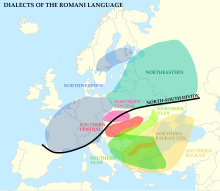Degree of endangerment
Appearance

Degree of endangerment is an evaluation assigned by UNESCO to the languages in the Atlas of the World's Languages in Danger.[1] Evaluation is given according to nine criteria, the most important of which is the criterion of language transmission between generations.[2]
Degree of endangerment
[edit]| status | explanation | examples[1] |
|---|---|---|
| Safe | The language is used by all generations. The transmission of the language from generation to generation is not disturbed | English, Arabic, Spanish, German, Ukrainian, French and other |
| Vulnerable | The language is used by most children, but it is used with some restrictions. For example, they speak this language only at home. | Adyghe, Anal, Bashkir, Belarusian, Chuvash, Neapolitan, Yiddish and other |
| Definitely endangered | The language is not learned by children as a native | Erzya, Mari, Newar, Romani, Udmurt, Walloon and other |
| Severely endangered | The language is used by older generations and is understandable to parents, but they do not use it when communicating with children and among themselves | Breton, Ingrian, Judaeo-Spanish, Nafusi, Nanai and other |
| Language revitalization | The language is in the process of being restored | Cornish, Manchu, Manx and other |
| Critically endangered languages | Only old people know the language and it is rarely used by them | Dahalik, Duruwa, Orok, Tofa, Ulch and other |
| Extinct language | 1. There are no living native speakers in the world 2. Previously, the language definitely existed, but now there is no reliable information about its state |
1. Dalmatian, Obispeño, Gothic 2. Ancient Cappadocian, Livonian, Yukaghir |
References
[edit]
